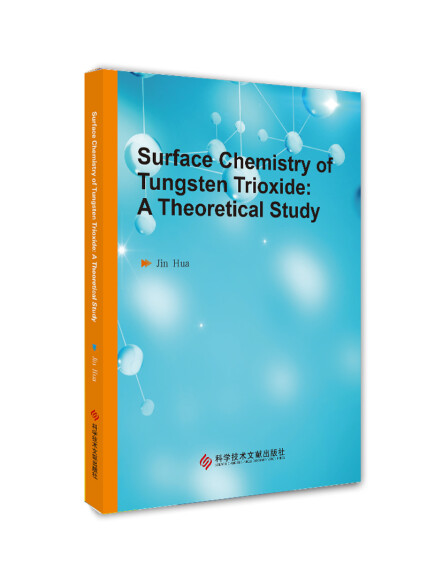
三氧化钨表面化学的理论研究 Surface Chemistry of Tungsten Trioxide:A Theoretical Study
Tungsten trioxide (WO3) is a kind of multifunctional semiconductor materials, and it has been widely used in different fields including photochromism, electrochromism, chemical sensors and so on, for its unique physical and chemical properties. In this work, the electronic structure and surface chemical reactivity of tungsten trioxide semiconductor are systematically investigated by using DFT method. It is hoped that this book would provide reliable theoretical foundation to get deep insight into the origin of the characteristic of WO3based material, as well as designing the new heterogeneous catalysts. The main conclusions of this book are as listed in following.1. The structural and electronic properties of seven WO3 bulk phases have been studied. Our calculations indicate that, among these phases the simple cubic structure is the least stable, but the energy difference between different WO3 phases is small (< 0.1 eV per WO3 unit). When the unit cell is distorted from the cubic structure, the reducing of the symmetry results in the increasing of the band gap. According to our theoretical results, the band gaps of simple cubic, tetragonal, hexagonal, orthorhombic, RTmonoclinic, triclinic, and LTmonoclinic phases are 1.42 eV, 1.46 eV, 1.55 eV, 2.13 eV, 2.47 eV, 2.54 eV and 2.75 eV, respectively.2.Geometries and electronic structures of a series of reconstructed WO3(001) surfaces have been systematically investigated. Our calculations demonstrate that the reconstructed (2×2)R45°surface has the lowest surface energy and is thermodynamically most stable. According to the electronic structure, the bridging oxygen at surface is the main component of the top maximum of the valence band, while the contributions of the top oxygen atom locate at lower energy region. Comparing with the structural and electronic properties of a series of (WO3)n clusters, the similarities in the structural and electronic properties between cluster and surface can be found when n = 6, thus W6O18 can be viewed as the smallest molecular model to understand the complex processes happened on the WO3 surface.3. The oxidation reactions of CO on perfect, defective and O2preadorbed WO3(001) have been systematically investigated. A possible full catalytic cycle is proposed to make the perfect WO3(001) surface as catalyst for CO oxidation, which contains three steps: (a) CO reacts with the top oxygen of the perfect WO3(001) surface to form a CO2 molecule and the corresponding defective surface is formed; (b) the O2 molecule is activated after adsorbing on the defective surface, because of the formation of O2-2 species; (c) another CO molecule reacts with the preadsorbed O2 to form the second CO2 molecule, and meanwhile the initial perfect surface is subsequently regenerated. The NEB calculations indicate that all steps are exothermic strongly; however, the first step is the ratelimiting step from the kinetics viewpoint.4.Geometries and electronic structures of WO3(001) surface doped by ⅤB, ⅥB, and ⅦB transition metals have been systematically explored. According to the doping energy, only the Ta doping is energetically favorable. By analyzing the electronic structures of four Tadoped configurations, the distribution of terminaloxygen radical as observed in W3O+9 can be reproduced only when a Ta atom replaces a sixcoordinated W atom on the surface. After doping, the top oxygen just above Ta atom is activated, and the CO oxidation reaction on the WO3(001) surface is enhanced. With respect to the undoped surface, the activation energy of the corresponding ratedetermining step is reduced obviously about 0.64 eV.